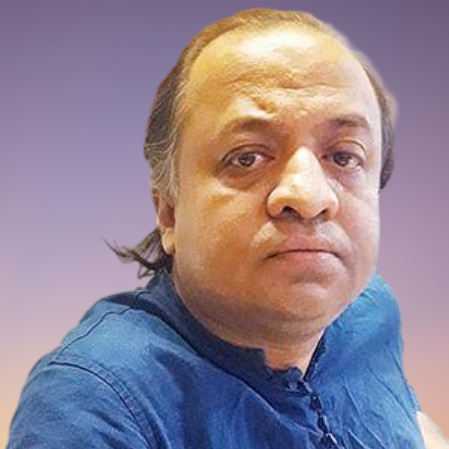Culture

Printmaking - a method that employs woodcut, etching, aquatint, linocut, lithography, dry point, serigraph, engraving etc. to transship images into paper - is past its industrial glory days. At present, it enjoys an afterlife as a medium of art. The current prints' show at Galleri Kaya carries a distinct trait because of some high ranking Indian printmakers' attention-grabbing works with several Bangladeshi technically advanced printmakers' works.
At the show Indian artist MF Husain's two prints denote a number of archetypal horses with vigorous movements. The iconic Indian painter mingled western modernity with Indian folk style -- focusing on vibrant colours, bold curves, dynamic movements and figurative compositions. Haren Das's etching portrays a carnival of a pastoral area, where villagers are gleefully assembled in a shiny moonlit night. He observed rural life not only with his own eyes, but also with his heart. Somnath Hore's two lithographs feature parts of human forms, bones, unshaped forms, slits and holes and the backdrop is in blood-red shade. K.G. Subramanyan's flexibility of expression and richness of visual language evolve from the diverse materials. Sanat Kar's etching has symbolically projected the social and political dilemmas with his evocative and sensual lines, and also incorporated several forms of lamenting eyes and sharp nails. Ganesh Haloi creates his own territory with marks in varied subdued colours, geometric lines and forms, as well as some diminutive straight lines placed in a certain pattern. Lalu Prashad Shaw's etching at the show is pure abstract and has been dominated by black and white. Sunil Das etched horse has its front hoofs in the air. Scribble-based sharp lines also feature in the print. Aditya Basak's etching shows three featherless cocks moving on a round shaped map, which has the backdrop in black. Atul Dodiya's one etching demonstrated a single nude female figure in the setting of a cloudy sky and a tiny tree emblematically appears. Bangladeshi artist Murtaja Baseer's one famous linocut "Bloody 21st", portrays the students' processions of the language movement demanding Bangla be made the state language of this country. And the Pakistani autocratic rulers shot down the processions which have been obviously articulated on the print. Rafiqun Nabi's green coloured woodcut denotes an open window where one can see a sky with a hazy sun. Two pigeons leisurely sit on the frame of the window-----symbolizing liberty. Mahmudul Haque's piece can be explained in many ways where one can find the touch of mysticism and some can get the taste of harmonization. Ratan Majumdar's woodcut articulates a still life relating to synchronization among bottle, glass and ashtray on geometric pattern based a table. Anisuzzaman's single serigraph is closely related to geometrical and structural elements that can easily sensitize the onlooker about his passion for architecture. Rokonuzzaman prints usually have been engrossed with bicycles in black and white. Ruhul Amin Tarek's prime aim is to highlight the movements of human body and also to emphasise the inner struggle and torment of human beings.
The exhibition continues till October 5.

























Leave a Comment
Recent Posts
From the British High Commissi ...
From December 26-30 of last year, WildTeam had the honour of hosting H ...
Why Southeast Asia’s online sc ...
Cambodia’s arrest and extradition of a powerful tycoon accused o ...
LC openings surge as dollar crisis eases, but settle ..
US President Donald Trump has been discussing "a ran ..
Delhi and Dhaka need to find an off ramp
Moin re-elected DCAB President; Emrul Kayesh new GS